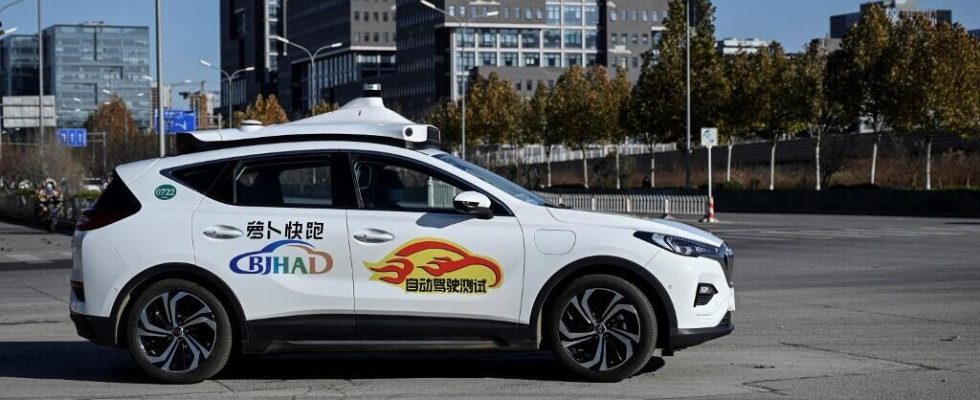The Chinese economy is facing a “ high uncertainty », according to the International Monetary Fund which forecasts Chinese GDP growth of 4.6% this year. Beijing is trying to reassure investors by setting up, in particular, new centers intended to facilitate administrative procedures for companies, such as in the south-east of the Chinese capital.
3 mins
With our correspondent in Beijing, Stéphane Lagarde
Digital screens everywhere and the cocktail of artificial intelligence associated with more or less robotic services, the Yizhuang economic and technological development zone, located near the new Beijing airport, has been renamed “city of innovation” by the organizers of this press trip.
First stop: the administrative affairs center of the economic development zone – 22,500 m², 586 agents – and its “one-stop shop”. The center answers 93 administrative questions in around twenty areas and should help speed up procedures for foreign companies, confides one of our guides. “ With these new reception desks, foreigners only have to make two visits compared to four previously. And operating permits are granted within five working days “, she explains.
Since China eased its strict Covid border controls last year, Beijing has launched an all-out campaign to woo investors and attract “ foreign talents “. Problem, they still haven’t come back andforeign direct investment has collapsed. Hence this economic and technological zone of 225 km² behind the fifth ring road which brings together, according to the official press release, more than 90,000 companies from 40 countries, including the new headquarters of JD.com, one of the Chinese online sales giants. .
Data Gaps
A mini-city in the neighborhood, explains one of those in charge of the visit in English (company communications employee): “ We have 15,000 people working in this first building. In total, there are 30,000 employees on site with offices for engineers and management teams. And we are building more facilities for our employees, including gyms and cafes. »
E-commerce, Baidu robot taxis on the country’s largest autonomous driving base, Zhonghang Zhi drones, Xinghe carrier rockets, SMIC semiconductors, and pharmaceutical industries including Bayer and Sanofi, after Shenzhen, Canton, Shanghai, the expansion zone of the Chinese capital aims to be a model of expansion for service industries, associated with a pilot free trade zone.
Slowing factors
Not sure that this is enough to reassure the markets. The Shanghai composite index fell below 2,700 points on Friday, and 600 stocks lost more than 9%, the biggest fall since February 2020. For this, it will be necessary, above all, says the IMF, to make an effort in terms of data transparency. The Washington-based institution says it has identified shortcomings “ important » in quarterly Chinese GDP data, in public administration figures and in local government finances.
IMF experts also cite the brutal slowdown in real estate, illustrated by the fall of major developers Country Garden and Evergrande, placed this week in compulsory liquidation by a Hong Kong court. Demand for new housing is expected to fall by half in the next decade, estimates the institution.
Chinese growth is also suffering from the decline in external demand in a gloomy global context. The Covid years have convinced most countries to reduce their dependence on China for their industrial production, particularly when it comes to sensitive technologies. A trend that Chinese domestic demand will not be able to fully compensate for. Other slowdown factors highlighted by the IMF: low Chinese productivity, an aging population and a tense geopolitical context unfavorable to world trade.
